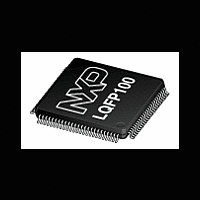LPC2361_62 NXP Semiconductors, LPC2361_62 Datasheet - Page 27

LPC2361_62
Manufacturer Part Number
LPC2361_62
Description
The LPC2361/2362 microcontrollers are based on a 16-bit/32-bit ARM7TDMI-S CPU with real-time emulation that combines the microcontroller with up to 128 kB of embedded high-speed flash memory
Manufacturer
NXP Semiconductors
Datasheet
1.LPC2361_62.pdf
(64 pages)
NXP Semiconductors
LPC2361_62
Product data sheet
7.23.1.1 Internal RC oscillator
7.23.1.2 Main oscillator
7.23.1.3 RTC oscillator
7.23.1 Crystal oscillators
7.23.2 PLL
7.23 Clocking and power control
The LPC2361/2362 includes three independent oscillators. These are the Main Oscillator,
the Internal RC oscillator, and the RTC oscillator. Each oscillator can be used for more
than one purpose as required in a particular application. Any of the three clock sources
can be chosen by software to drive the PLL and ultimately the CPU.
Following reset, the LPC2361/2362 will operate from the Internal RC oscillator until
switched by software. This allows systems to operate without any external crystal and the
bootloader code to operate at a known frequency.
The IRC may be used as the clock source for the WDT, and/or as the clock that drives the
PLL and subsequently the CPU. The nominal IRC frequency is 4 MHz. The IRC is
trimmed to 1 % accuracy.
Upon power-up or any chip reset, the LPC2361/2362 uses the IRC as the clock source.
Software may later switch to one of the other available clock sources.
The main oscillator can be used as the clock source for the CPU, with or without using the
PLL. The main oscillator operates at frequencies of 1 MHz to 25 MHz. This frequency can
be boosted to a higher frequency, up to the maximum CPU operating frequency, by the
PLL. The clock selected as the PLL input is PLLCLKIN. The ARM processor clock
frequency is referred to as CCLK elsewhere in this document. The frequencies of
PLLCLKIN and CCLK are the same value unless the PLL is active and connected. The
clock frequency for each peripheral can be selected individually and is referred to as
PCLK. Refer to
The RTC oscillator can be used as the clock source for the RTC and/or the WDT. Also, the
RTC oscillator can be used to drive the PLL and the CPU.
The PLL accepts an input clock frequency in the range of 32 kHz to 25 MHz. The input
frequency is multiplied up to a high frequency, then divided down to provide the actual
clock used by the CPU and the USB block.
The PLL input, in the range of 32 kHz to 25 MHz, may initially be divided down by a value
‘N’, which may be in the range of 1 to 256. This input division provides a wide range of
output frequencies from the same input frequency.
•
•
•
•
•
Dedicated 32 kHz oscillator or programmable prescaler from APB clock.
Dedicated power supply pin can be connected to a battery or to the main 3.3 V.
Periodic interrupts can be generated from increments of any field of the time registers,
and selected fractional second values.
2 kB data SRAM powered by VBAT.
RTC and battery RAM power supply is isolated from the rest of the chip.
All information provided in this document is subject to legal disclaimers.
Section 7.23.2
Rev. 5 — 25 October 2011
for additional information.
Single-chip 16-bit/32-bit MCU
LPC2361/62
© NXP B.V. 2011. All rights reserved.
27 of 64














